
Welcome to WW2Buyer.com
David Mattey of WW2Buyer.com
is a conscientious dealer with over 40 years experience in the purchase and sale of Medals ,Decorations , Arms and Militaria.

David who has worked from his high street premises for the last twenty years acts as buyer to city investment groups ,Advanced collectors and the premier specialist websites.

David believes that investors are happy to pay a premium for expertise, research and unconditionally guaranteed exhibits.
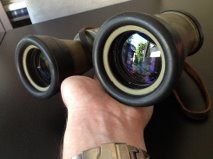
WW2Buyer.com are engaged in the purchase of Allied And Axis Uniforms ,Daggers,Medals, Awards, Orders, Decorations and associated “Militaria.
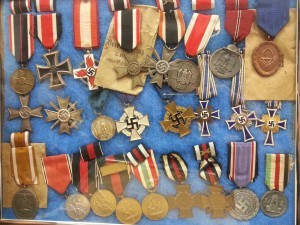
If you believe you have already obtained a fair offer David welcomes the opportunity of offering a confidential second opinion.

Call or e-mail davidmatteybuyer@gmail.com today for free advice and valuations. please feel free to use the contact form provided.
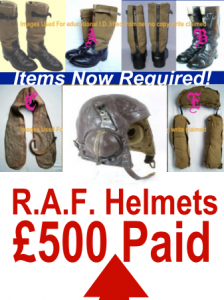
Our offers and valuations both free of charge and confidential.
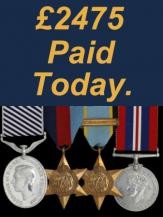
If you have by your own research, established an asking price or obtained bids from other parties.
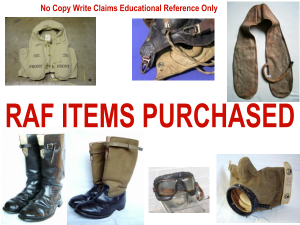
Please include offers in your communications.
WW2Buyer.com are not in the business of haggling if we can see modest margin we will advance payment today.
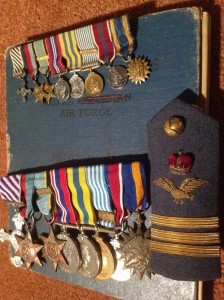
Before consigning militaria for sale by auction please be aware that 35%-44% of the total paid by the buyer will be lost to the auctioneer. If you have obtained suggested reserve figures from auctioneers
WW2Buyer.comwill pay 100% of these immediately.
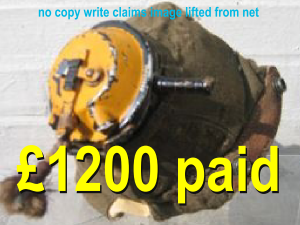
Contact: David Mattey
Tel: 01903-884602 Mobile 07860747027
or e-mail:davidmatteybuyer @gmail.com

WELCOME
We have been dealing in World War Two Royal Air Force memorabilia for over 20 years.

The fascination and inspiration for collectors lies in the bravery of airmen and the terrifying tasks they performed .

First hand stories from the last
of the “knights of the sky” had kept history alive for us at WW2buyer.com .
Now only the artefacts are the silent whiteness’s To the air battles of WW2
Original pictures of airmen and their, log books, medals, etc now form part of our stock.
Whilst we are a commercial operation we respect the bravery and sacrifice of aircrew of the RAF.

An interesting 77 Squadron RAF named medal grouping for service from 1936 to 1972 retired as 526302 W/O Gordon Foster.

-
Medals.
-
1939 – 45 Star.
-
Air Crew Europe Star.
-
Defence Medal.
-
War Medal. Issue
-
LSGC medal with clasp.

-
Caterpillar Club badge with certificate + Irvin lapel badge.
-
Log book (Air Gunner) + Original brass Air Gunner badge “flying bullet”.
-
77 Squadron blazer badge (Kings crown).
-
77 Squadron photograph in front of a Whitley III, RAF Driffield 1938/39?

-
“So Many” (RAF Bomber Command 1939 – 45).
-
“Hamish” Story of Gp Capt Hamish Mahaddie personally signed served in 77 Squadron
No. 77 Squadron
 Motto: “Esse potius quam videri” (“To be, rather than seem”).
Motto: “Esse potius quam videri” (“To be, rather than seem”).
Badge: A thistle. The thistle commemorates the fact that the squadron was formed in Scotland.
Authority: King George VI, April 1938.
No. 77 Squadron was formed at Edinburgh on 1st October 1916, and its work during the First World War was Home Defence against enemy airships, co-operation with the Forth garrison batteries and the Scottish Command in case of enemy landings, and the training of night-flying pilots for overseas. It was disbanded in 1919.

In June 1937, No. 77 Squadron was re-formed at Finningley, Yorkshire, as a bomber unit. When war came again it was flying Whitleys from Driffield and during the early months of the war was employed on dropping Nickels, or propaganda leaflets, over enemy territory. Leaflets were dropped on the Ruhr, Vienna, Prague and Warsaw and, usually, the Whitleys operated from an advanced base in France. It was during the operation to Warsaw (Bomber Command’s second visit to Poland but No. 77’s first visit), on the night of 15/16th March 1940, that one of the squadron’s crews performed a feat which probably remained unparalleled for the rest of the war. Having dropped their Nickels on Warsaw they returned safely across Germany and then, because the weather was bad, put down as soon as possible after crossing – as they thought – the Franco-German frontier. A few words with the local peasantry quickly disillusioned them, but by that time German troops were approaching on cycles. The quick-witted crew promptly dashed back into the aircraft, took off under rifle fire, and landed safely, but rather shaken, at a French airfield!1.
In addition to Nickelling, No. 77 was employed on reconnaissance and Security Patrols during the early months of the war and in the course of some of its Security Patrols dropped bombs on what appeared to be harbour and seaplane base landing lights at or near Borkum, Sylt and Nordeney. The spring of 1940 saw the squadron start bombing in earnest and during the period March to June it figured in several notable Bomber Command “firsts”. On 19/2Oth March it took part in the first attack on an enemy land target (Hornum, on the island of Sylt); on 11/12th May it took part in the first big attack on the German mainland (the exits of Munchen-Gladbach); and on 11/12th June it took part in the first attack on Italy (primary target the Fiat works at Turin).
No. 77 Squadron continued its offensive against enemy land targets until April 1941, and then, early in May, was posted to Chivenor, North Devon, for temporary duty with No. 19 Group, Coastal Command. From Chivenor the Whitleys were mainly employed on flying anti-submarine patrols over the Bay of Biscay and on 3rd September one of them attacked and sank with depth charges U-705.
Back in Yorkshire with its old parent Group (No. 4) No. 77 Squadron began to convert to Halifaxes in October 1942, and was ready in plenty of time for the Battle of the Ruhr which opened in the following spring. The, squadron continued with Halifaxes for the rest of the European war and, in addition to playing a prominent part in the bomber offensive, also participated in Bomber Command’s highly-successful Gardening, or minelaying, campaign. It also shared – in September/October 1944 – in the task of flying nearly half a million gallons of petrol to an airfield near Brussels for the Second Army which was then desperately short of petrol for its lorries and tanks.
On 7th May 1945, No. 77 Squadron was transferred to Transport Command.
1. The aircraft involved in this incident was Whitley VN1387, “L-Love” captained by Flight Lieutenant Tomlin. A WW1 parallel to this story will be found in the history of No. 100 Squadron.
Bomber Command WWII Bases:
-
-
Driffield : Jul 1938-Aug 1940
-
Detachments in France (Villeneuve, code name Sister)
at various times during period Oct 1939-Mar 1940.
-
-
Detachments at Kinloss, Nov 1939 (on loan to
No.18 Gp. Coastal Command) & Apr/May 1940.
-
-
Linton-on-Ouse : Aug 1940-Oct 1940
-
Topcliffe : Oct 1940-Sep 1941
-
Leeming : Sep 1941-May 1942
-
Chivenor (on loan to No. 19 Group, Coastal Command) :
May 1942-Oct 1942
-
Elvington : Oct 1942-May 1944
-
Full Sutton : May 1944-May 1945
Transferred to Transport Command 7.5.45.
Bomber Command WWII Aircraft:
-
-
Armstrong Whitworth Whitley III and V : Nov 1938-Oct 1942
-
Handley Page Halifax B.II, B.III, B.V and B.VI : Dec
1942-May 1945
Code Letters:
-
-
During the 1938 Munich crisis No. 77 was allotted the code
letters “ZL”. In WW2 the sqdn’s a/c were coded “KN”.
First Operational Mission in WWII:
-
-
5/6th September 1939 : 2 Whitley III’s dropped Nickels
over the Ruhr.
First Bombing Mission in WWII:
-
-
12/13th December 1939 : 1 Whitley bombed “scattered
lights” on edge of island of Borkum and in harbour there, and another Whitley bombed lights in sea off island of Sylt. Both a/c were flying security patrols.
Last Operational Mission in WWII:
-
-
25th April 1945 : 19 Halifaxes bombed gun batteries on
island of Wangerooge.




 Motto: “Esse potius quam videri” (“To be, rather than seem”).
Motto: “Esse potius quam videri” (“To be, rather than seem”). 















